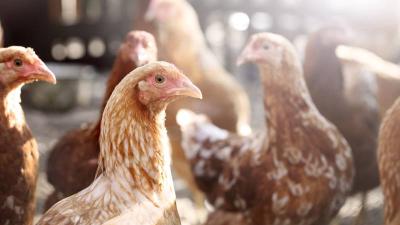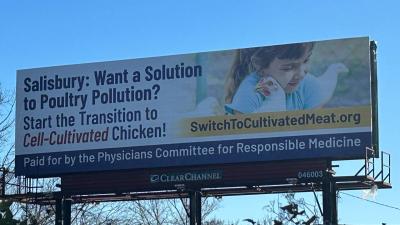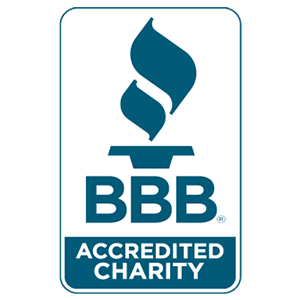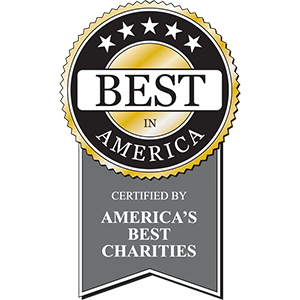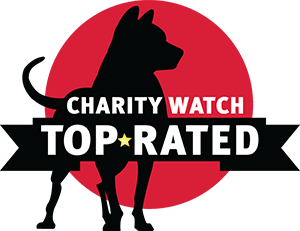Doctors Urge Ohio Governor to Phase Out Crowded Egg Farms and Mega-Dairies Where Diseases Like Bird Flu Can Easily Spread
Gov. DeWine Should Fund Farmers Who Transition From Livestock to Crops

COLUMBUS, Ohio—The Physicians Committee, a national doctors’ group with 381 physicians in Ohio, and 17,000 doctors nationwide is calling on Gov. Mike DeWine of Ohio to phase out crowded egg farms and mega-dairies where diseases like H5N1 Bird Flu can easily spread. In Ohio, there are about 295 large-scale, industrial livestock facilities, according to the U.S. Environmental Protection Agency.
The H5N1 bird flu virus has resulted in the deaths of millions of birds on egg farms in Ohio and other states. Bird flu has been detected in dairy cows in Wood County, Ohio as well as in at least 67 dairy herds nationwide. Just recently, another dairy worker tested positive for bird flu in Ohio’s neighboring state of Michigan.
The current bird flu crisis is an urgent reminder to transition food production away from intensive animal agriculture, and Gov. DeWine could support farmers in his state by asking the legislature to send him a supplemental appropriations bill that would establish a transition fund. Grants would be offered to dairy farmers, egg farmers, and others who wish to plant orchards or otherwise transition to growing crops.
The legislation in Ohio could be modeled on a program established by lawmakers in Vermont who provided grants to farmers who wished to diversify or transition from one type of farming to another.
Facilities with large numbers of animals in a small amount of space, are a threat to public health because they provide ideal conditions for viruses to spread, evolve, and possibly acquire the ability to infect people. Intensive animal agriculture was implicated when influenza viruses H1N1, H5N1, and N7N9 jumped from animals to people, according to research published in Frontiers in Microbiology.
Recently, the federal government announced that it will compensate dairy farmers for loss of milk production caused by bird flu. The government also compensates farmers when bird flu causes the loss of huge flocks of egg-laying hens or other birds. Government grants and other assistance should be available if dairy farmers or egg producers would like to switch to growing crops.
Due to economic hardship or other factors, many dairy farmers are choosing to exit the business. In Iowa, former dairy farmer Denise O’Brien sold the cows when milk prices were low and transitioned to growing crops including strawberries, raspberries, asparagus, and apple trees. In Wisconsin, Greg Zwald embraced the life of a dairy farmer, but things changed and he now runs a pick-your-own-berries enterprise. A Wisconsin dairy farmer, Paul Jereczek, is planting hazelnut trees because he’d like his children to stay on the land and he doesn’t see a future in dairy farming.
Growing trees while phasing out livestock can be especially beneficial to the environment since trees absorb carbon dioxide from the atmosphere and release oxygen for us to breathe. In Ohio, the amount of land devoted to orchards has increased from 8,984 acres in 2017 to 10,789 acres according to the most recent census of agriculture.
If there are fewer dairy cows and laying hens, where will people get their protein and calcium? In Ohio, farmers grow many sources of protein, calcium, iron, and other nutrients. Walnuts are grown on about 981 acres in Ohio, and they provide protein, fiber, iron, calcium, and other nutrients. Other sources of calcium include almonds, sweet potatoes, and kale.
Plant-based foods grown in Ohio can help people improve heart health, prevent diabetes, and maintain a healthy weight, among other benefits. A recent study with 22 pairs of identical twins found that a plant-based diet improves heart health in as little as eight weeks. The twins following a plant-based diet experienced lower LDL or “bad” cholesterol, and they lost more weight than the omnivore twins.
Gov. DeWine is a leader in protecting waterways in his state as shown by the recent announcement of the expansion of his water quality program, H2Ohio. One way to keep phosphorous and other pollutants from flowing into rivers is to install riparian buffers of trees and shrubs to intercept polluted water running off of fields where chicken litter has been applied. Trees that are suitable for riparian buffers, like hazelnuts can also provide income to the farmer, according to the U.S. Department of Agriculture.
Large-scale poultry operations produce huge amounts of waste and contribute to waterways overloaded with phosphorous, and other pollutants. In a lawsuit that was recently concluded, the state of Oklahoma argued that contract poultry farms in Arkansas were polluting a scenic river that runs between the two states. The judge ruled in Oklahoma’s favor.
The life of a contract chicken grower can be challenging, and some of them are repurposing their chicken houses to grow crops. In Southwest Arkansas, farmers Jennifer and Rodney Barrett are transitioning from raising poultry and cattle to growing mushrooms. In North Carolina, former chicken farmers Paula and Dale Boles have converted their 500-foot-long poultry barns to greenhouses to grow organic vegetables. But these transitions aren’t easy and the government should provide financial and technical support.
Large-scale livestock operations contribute to climate change by producing methane, a powerful planet-warming gas. The World Health Organization says, “Reducing livestock herds would reduce emissions of methane, which is the second largest contributor to global warming after carbon dioxide.” Methane is an efficient heat-trapping gas, but it’s relatively short-lived, so reducing emissions now could help slow global warming.
Media Contact
Jeanne Stuart McVey
202-527-7316
jmcvey[at]pcrm.org
Founded in 1985, the Physicians Committee for Responsible Medicine is a nonprofit organization that promotes preventive medicine, conducts clinical research, and encourages higher standards for ethics and effectiveness in education and research.
